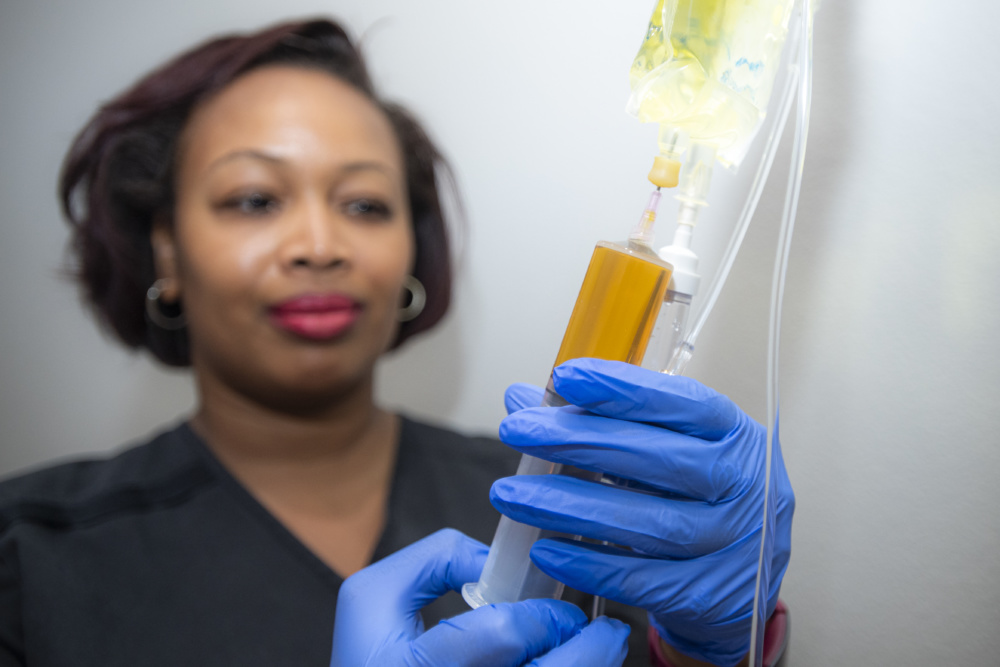Provided by Lacey Batch
Nobody relishes the prospect of pain and yet, it is the one thing we can guarantee will happen at some point. Aches and pains can manifest seemingly without reason and these are often caused through poor posture, lifting awkwardly but even sneezing without warning could cause muscle spasms in the back. For pain that lingers, it is important to ascertain the cause and to gain a medical diagnosis. Any type of pain – whether chronic or acute is detrimental to everyday life and, it can be debilitating or restrictive. When pain starts to impact life on a day to day basis, it is paramount that you look at ways in which to manage or reduce the symptoms.
The following 10 treatment methods will help to get pain under control and boost the healing process:
1. Ice therapy
If an injury occurs, it is important to apply ice as quickly as possible as this helps to reduce any swelling and, slows inflammation. Ice therapy can also work efficiently for pain reduction too. It provides a similar effect to a local anesthetic and slows down nerve impulses which is useful for any pain-spasm experienced. Ice therapy treatments reduce damage to the tissues.
2. Hydrotherapy
Hydrotherapy as a pain relieving or healing treatment works to mobilize the joints as well increasing the rage of motion without placing pressure on the injured area. Hydrotherapy also increases balance and stability and treatments are useful for those with weight-bearing issues. For any condition that affects the knee or ankle joints, hydrotherapy treatments provide a safe alternative for moving safely and without further injury.
3. Physical therapy
After an injury, physical therapy is often prescribed and for good reason. Regular sessions help to improve the strength and mobility of any injured area and there is often a combination of treatment methods used to help with the recovery process. This includes stretching and strengthening treatments. Methods chosen are dependent on that person’s requirements, so it is highly targeted and effective.
4. Food
People often do not think about food when it comes to the management of pain, but it plays a vital role. Some foods actively increase inflammation while other food types do not. Foods that are high in sugar, saturated fats or trans fats are inflammatory and therefore, should be avoided. A balanced diet is so important, and this includes having enough fat, proteins and carbohydrates. Drinking plenty of water daily is also essential for health.
5. Meditation
When pain occurs, it’s easy to tense the body and so, meditation can be a wonderful way to release any tight muscles and to eradicate deeply stored tension. Meditation aids relaxation and it can help to distract the focus away from pain. Focus is on each part of the body releasing taut muscles, but attention is also on visual imagery. Breathing exercises can be used in conjunction with meditation so to slow the mind and to instill feelings of peacefulness while heightening mood too.
6. Exercise
Exercise is important to keep the body strong and to provide the right environment for healing. But, when pain is present, greater care should be taken to not overdo any exercise. It is important to work with the body and to reduce movement if pain niggles or increases. Exercise increases blood flow, and this helps the healing process. Yoga is an excellent exercise system to help strengthen the body and to increase flexibility. It increases focus and mindfulness on each movement which helps eliminate the risk of further injury. It is extremely useful for rehabilitation and for pain reduction.
7. Massage
Massage has a great many benefits when pain is present. It is wonderfully calming and helps the recipient to feel peaceful while releasing endorphins that improve mood. Massage can lead to a deep, nurturing sleep as it increases relaxation and aids the healing process. It is a credible treatment when pain is experienced and it improves blood flow, increases circulation and sends important nutrients to the muscles and tissues of the body.
8. Alcohol
When pain is acute or chronic, it can be easy to turn to alcohol to help numb the feeling but, too much alcohol is bad for the body. While it may help alleviate low mood or, in the short term, lift the intensity of pain, it can cause problems when taken with medication. It provides a false distraction from pain.
9. Smoking
In a similar way to alcohol for pain relief, it’s easy to use cigarettes to help break the pain cycle as nicotine helps release chemicals such as dopamine and this can temporarily increase mood. In time, those cigarettes may make pain much worse and can impair the supply of oxygen-rich blood from reaching the bones and tissues of the body. Smoking can aggravate joint pain as well as abdominal pain and can increase sensitivity which will lead to additional pain. Smoking is linked to slower healing processes.
10. Rest
Rest must be considered on an individual basis. It is always best to try to listen to the body as we often instinctively know what is needed. Too much rest is not ideal because the body can stiffen, and muscles can waste away – this is an especially important consideration for those who need a lot of bed rest. Ideally, rest when pain is present and stretch and strengthen the body when pain dissipates.
When pain occurs, try out some of these healing suggestions and you will find that they will improve health and wellbeing while enabling you to recover from injury more proficiently. Once pain has passed and the body is healed, consider strengthening the body and increasing flexibility. It is worth monitoring posture too as this can help reduce the potential risks for injury.





Recent Comments